In partnership with Guide Dogs, UCL PEARL are conducting research into the impact of design trends that are on the increase within the built environment on people with a range of disabilities. The design trends include Bus Stop Boarders and Bypasses; Continuous or Blended Pavements; and Shared Pedestrian and Cycle Lanes (samples of which can be found at the end of the document).
The aim of this research is to look at the impact of each design feature on disabled people and to come up with possible solutions to mitigate against any barriers that are identified.Prior to planned experiments we are seeking to recruit participants over the age of 18 that meet at least one of the following criteria to take part in focus groups.
- Blind and partially sighted people
- People from the neurodiverse community
- People with a learning disability
- Wheelchair users/people living with a mobility impairment
A focus group will take place in Glasgow (details below) where participants will be compensated with Amazon vouchers worth £50 for their time and travel expenses:
Date: Monday 26 February 2024
Location: Health and Social Care Alliance Scotland, 349 Bath Street, Glasgow. G2 4AA
If you believe you are eligible for this study and would like to find out more, please contact pearl@nullucl.ac.uk.
Below, we have included examples of the design trends (images and descriptions) that will be included in this research.
Samples of the built environment features
Floating bus stops: A floating bus stop or bus stop bypass ‘is an arrangement that involves a cycleway running behind the passenger boarding area at a bus stop, between an island and the footway.
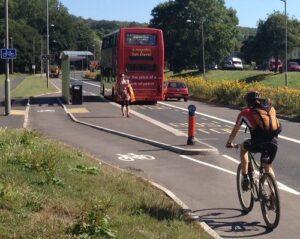
Photo of a rural road with a cycle track running behind a bus stop
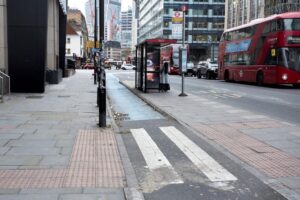
Photo of a cycle track running behind the bus stop.
Bus stop boarders: A bus stop boarder is a platform onto which bus passengers alight. The cycle track runs between the carriage and footway. Can be used in isolation, as a build-out from a footway, or as part of a floating bus stop arrangement.
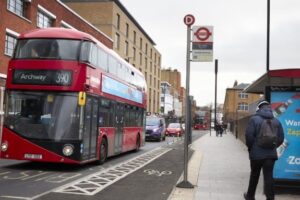
Photo of a double decker bus stationary at a bus stop boarder.
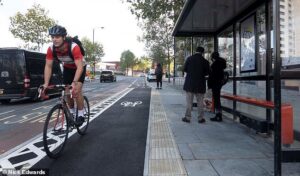
Photo of a cyclist riding parallel in front of the bus stop.
Difference between a bus stop bypass and boarder.
Bus stop bypass – bus stop is located on an island.
Boarder – bus stop located on the pavement.
Shared pedestrian and cycle routes: A shared pedestrian and cycle route is where pedestrians and cyclists share the pavement. The cycle track is taken off the carriageway and placed on the pavement.
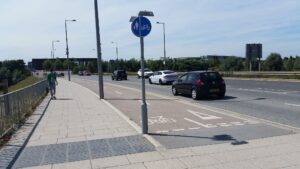
Photo of a segregated cycle and pedestrian route running parallel to the road.
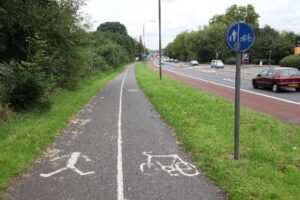
Photo of the outdoors showing a shared pedestrian and cycle route.
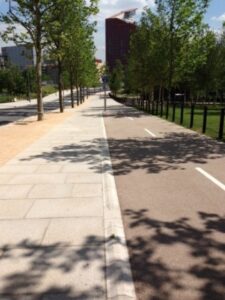
Photo of a segregated pedestrian and cycle route.
Blended or continuous pavements/footways: Blended or continuous pavements/footways is where a footway adjacent to a carriageway extends over a junction where a side road joins a main road.
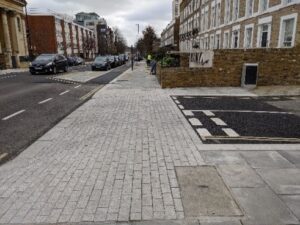
Photo of a continuous footway across a side road.
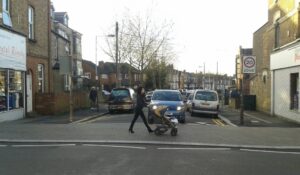
Photo of a person with a buggy walking across a continuous pavement
Posted on the: February 14, 2024



 0800 987 1087
0800 987 1087


